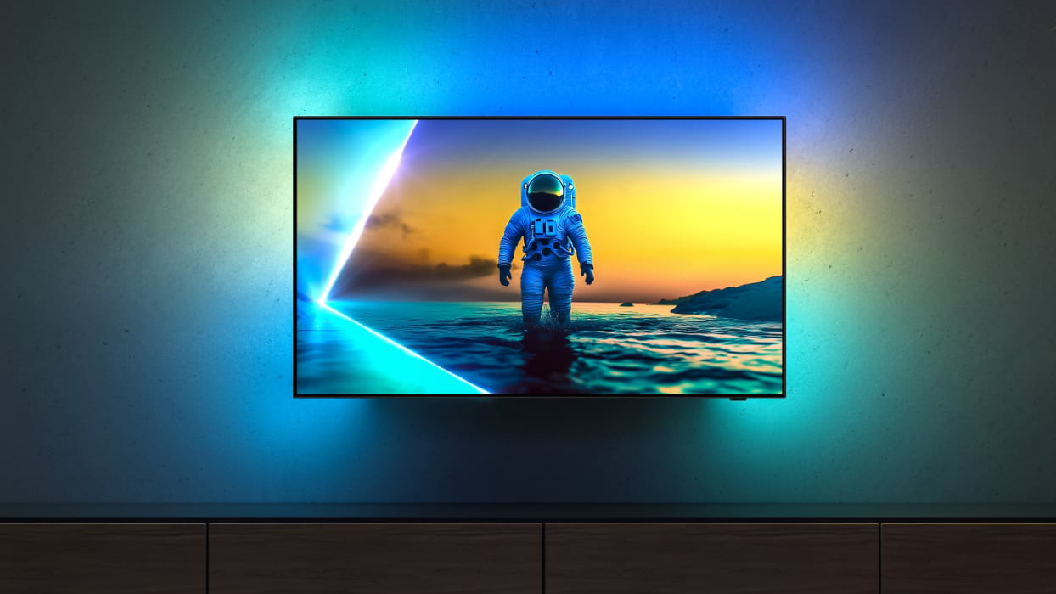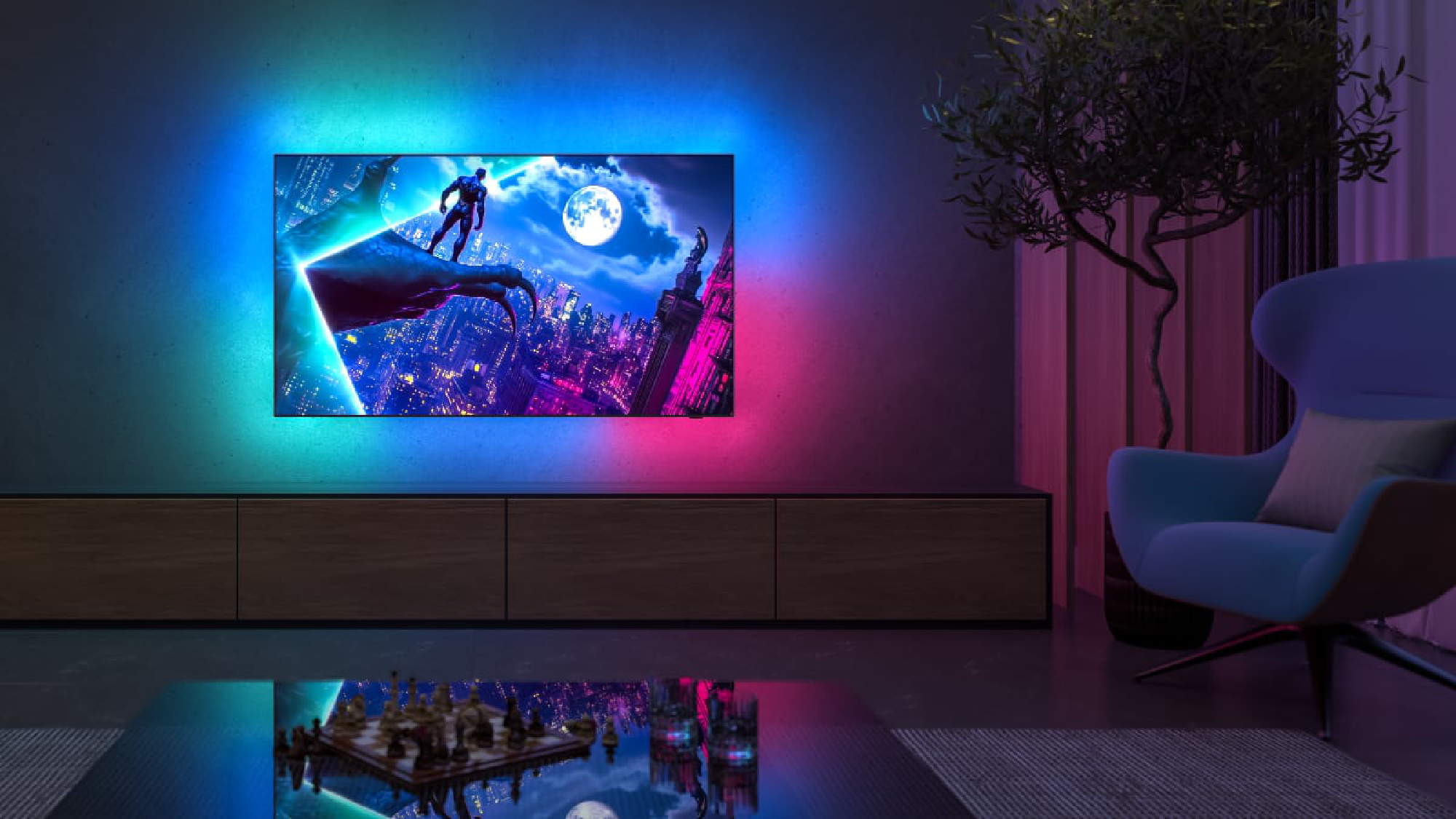
It's a shame that Philips doesn't sell its displays here in the U.S. because its 2025 TV lineup (available in Europe) is looking like its prettiest offering yet. Going hand in hand with its Hue lighting range, Philips' newest TVs sport sophisticated backlighting with colors that sync with whatever is on the screen. It's as mesmerizing as it is ingenious, and I wish more TV brands would offer features like this.
These design changes, though incredibly simple, speak to the fact that TVs are going stale. Sure, we're seeing some exciting internal tech upgrades, like LG's four-stack OLED panel and the new ThermalFlow cooling found on Panasonic's 2025 TV lineup, but do these major advancements offer that much excitement to the general consumer? I'm led to believe they don't.
I hope brands like LG and Samsung take inspiration from Philips's newest series. Even just a touch of color can make all the difference.
Making a statement in the OLED market

Don't you wish your TV could have a bit more flare?
As someone who has tested some of the best LG TVs, I would love to see some extra shine, an additional level of immersion beyond what an OLED can do with incredible contrast and clarity. Philips' new OLED TVs do precisely that. The company's stunning Ambilight technology leverages LEDs on the back of the panel that fill the space around the display with colors that are synchronized with the picture.
It's not hard to envision brands like LG and Samsung following suit. After all, many of these companies are already taking major swings with lifestyle TVs. Just look at the 2025 Samsung TV lineup, which features several displays that take inspiration from its beloved The Frame QLED TV.
Wouldn't The Frame itself be particularly ideal for something like Ambilight? I understand it's intended to give the impression of a piece of art or artwork on the wall, but I'm actually now curious how The Frame might look with a set of Govee T2 backlights.
Does it go against the grain, and isn't this a total gimmick? Yes, but that's the whole point. Philips' newest TVs look totally beautiful, and the brand is well-positioned to pull this off, given its Philips Hue ecosystem. So, too, are LG and Samsung, as both companies have their own individual smart lighting systems.
In fact, LG even developed OLED lights that double as speakers, which were unveiled all the way back in 2018.
How Samsung and LG could make it even better
In our TV reviews — even the best OLED TVs — we pay close attention to audio performance. It's one of the main reasons why I heap so much praise on the Panasonic Z95A OLED TV, as it has a slick audio system that's backed up with incredible software in its 360 Soundscape Pro.
Panasonic isn't alone, though. The Samsung S95D OLED TV also has one serious audio system, and Samsung offers a surround sound enhancer in Q-Symphony.
But what if the ambient lighting was also dynamically integrated with the sound system? Samsung or LG could go a step further and design ambient lighting in a way that enhances the audio across its TVs.
What if the ambient lighting was also dynamically integrated with the sound system?
We're in a weird time in the TV space. Mini-LED TVs are on the rise thanks in large part to cheaper prices and it looks like the beginning of the end for QD-OLED TVs. LG's dropped its MLA panel and Samsung's going all-in on lifestyle TVs. I'm of the mind that off-beat design choices can prove beneficial in the future for OLED models.
You can call me crazy if you'd like. After all, it's a crazy proposition. But devices exist for this very consumer, case in point being the Philips Hue Play HDMI sync Box 8K (not to mention the slew of Govee and other assorted products for ambient backlighting). I think it would be interesting if other TV makers took up the design and ran with it. It likely wouldn't cost much and it would add a ton of immersion to everyday entertainment.







